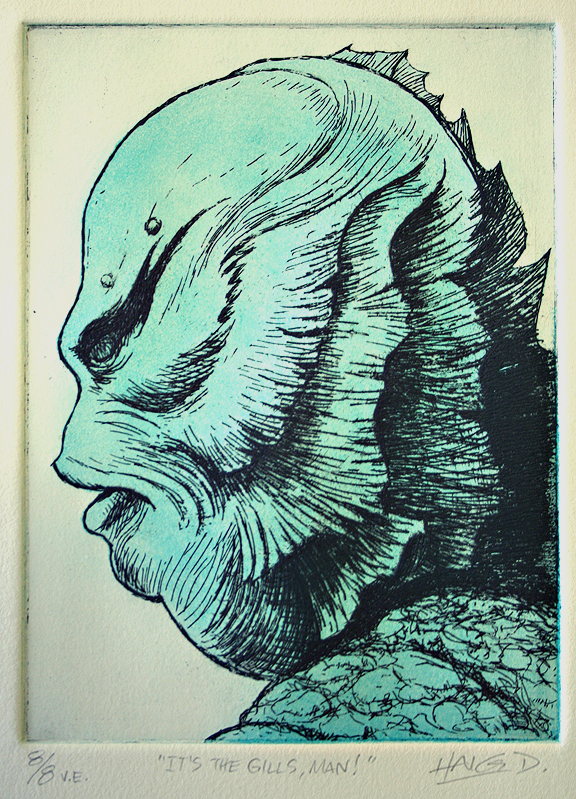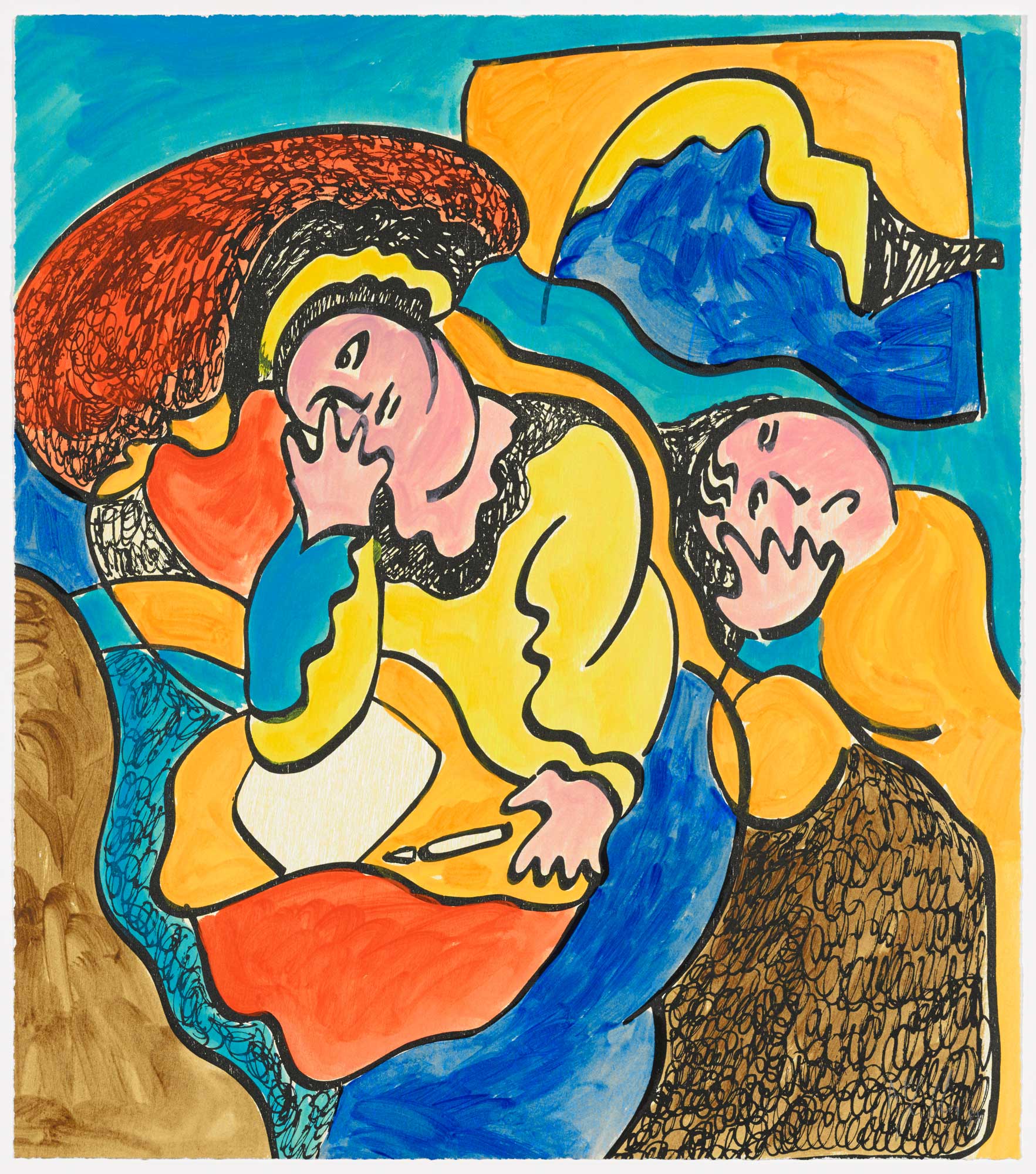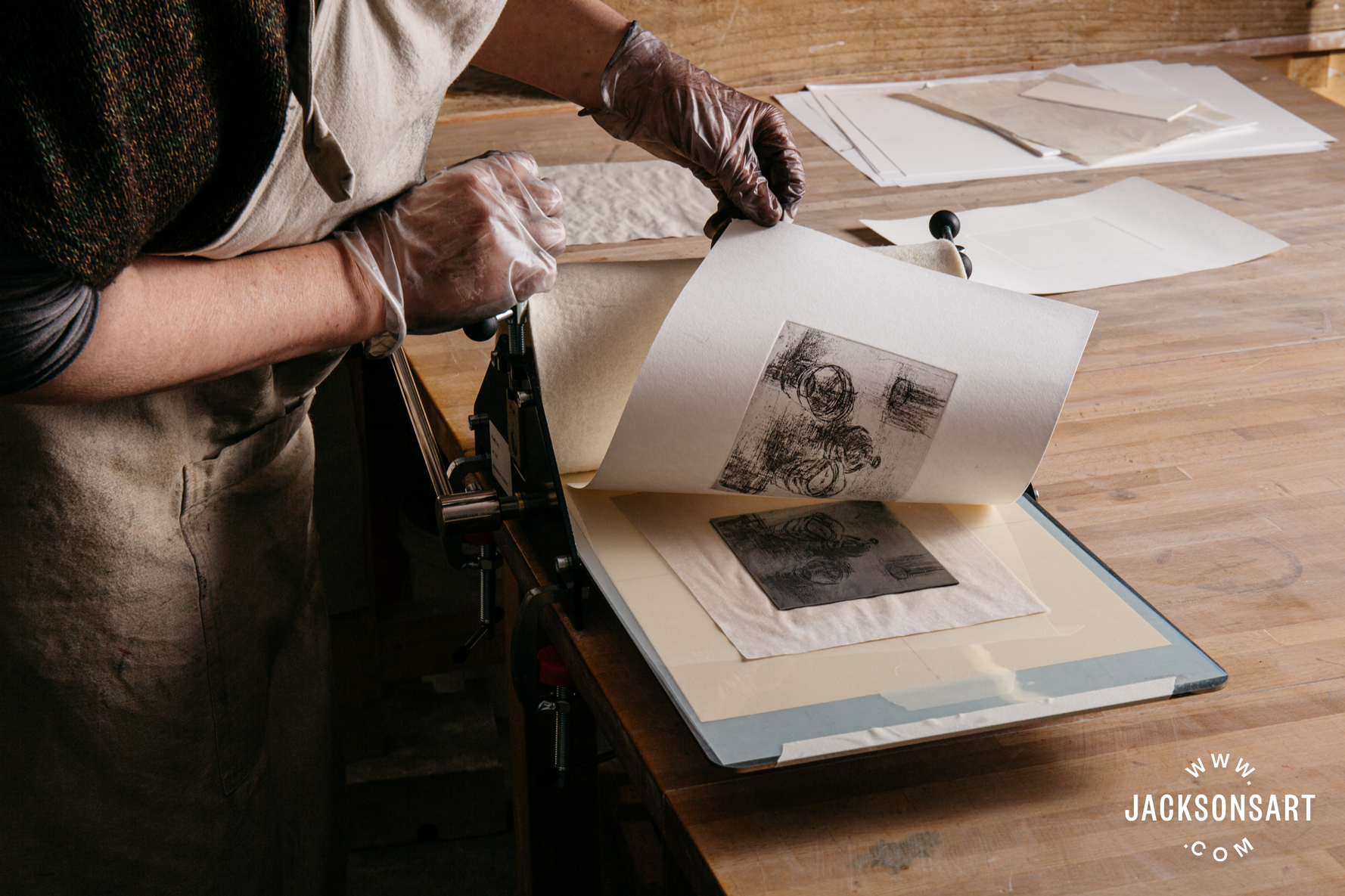

Each one produces a distinct look and feel, and many artists will combine two or more techniques to produce one-of-a-kind prints. There are five traditional intaglio processes: engraving, etching, drypoint, aquatint, and mezzotint. After the bed arrives at the other end of the press, the blankets and paper are removed to reveal the finished print. We’re known for Individually Handcrafting the Finest Quality Framed Intaglios in the world. Tiberian Design is considered the pioneer of the modern Framed Intaglio, with trademark designs that have been a staple in the design community for 20 years. Introduction to etching, dry point, aquatint, and other techniques related to metal plate printmaking. Finally a dampened paper is pressed against the plate. Rated Best Source, Best Quality, Best Price By AD Top 100 Designers. ART 221 - Beginning Printmaking: Intaglio. The surface is wiped clean so that the ink remains only in the incised areas. The bed is then cranked between the two rollers, which forces the paper into the recessed areas of the metal plate. Intaglio printmaking techniques work by incising into the surface of a plate (steel, copper etc.) with tools or with acid.

A dampened sheet of paper is laid on top of the plate, and two felt blankets are placed on top of the paper. Dryad Education, the new home of Specialist Crafts and Heart Educational, is one of the leading suppliers of Art, Textiles, Design and Technology resources. Once inked, the plate is then positioned onto the bed of an etching press, which is a machine with two steel rollers that provide pressure. Once the plate is inked using a roller, its surface is wiped clean and only the pigment in the recessed areas is left. Intaglio ( / ntlio, - t -/ in-TAL-ee-oh, -TAH- 1 Italian: intao) is the family of printing and printmaking techniques in which the image is incised into a surface and the incised line or sunken area holds the ink. Originating from Italy, intaglio is the collective term for printmaking techniques in which the image is incised into the surface of metal plates (most commonly made of copper, zinc, or brass).

A post shared by Kraisak Chirachaisakul on at 9:46pm PDT


 0 kommentar(er)
0 kommentar(er)
